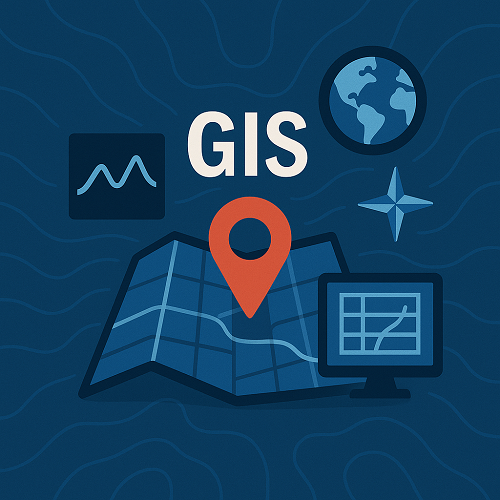TL;DR
- Artificial Intelligence (AI) integration is transforming geospatial analysis with predictive spatial modeling and automation.
- Cloud-based GIS platforms are enhancing collaboration, scalability, and real-time data access.
- IoT and sensor networks are delivering instant, location-aware streams for smart cities and environmental monitoring.
- Real-time data processing enables actionable insights faster across industries from agriculture to logistics.
- Geospatial technologies are becoming central to digital transformation strategies in both public and private sectors.
What’s New Right Now
In 2025, GIS is evolving rapidly with the convergence of AI, IoT, and cloud computing. Platforms are now capable of ingesting real-time data and applying machine learning algorithms to detect patterns or anomalies within geospatial datasets. Innovations in predictive analytics and automation are streamlining how organizations leverage spatial information for strategy and operations. Recent reports by Esri and Geospatial World highlight that cloud-native GIS is accelerating adoption rates across sectors, enabling smart infrastructure management and sustainable urban planning.
Why It Matters
For business leaders, this technological leap means faster decision-making, enhanced operational efficiency, and smarter resource allocation. The ability to analyze spatial data in real time allows companies to mitigate risks—whether it’s optimizing logistics routes, predicting crop yields, or monitoring energy consumption.
From a technical standpoint, developers and analysts can now deploy lightweight GIS applications directly in the cloud, integrate APIs for continuous data feeds, and automate analysis pipelines with AI. This democratizes access to geospatial insights previously reserved for data scientists.
Key Trends Driving Next-Generation GIS
AI-Powered Analytics
Machine learning models are stepping beyond simple mapping to perform predictive spatial modeling. For instance, image recognition algorithms can classify land use from satellite imagery with remarkable accuracy, helping planners identify deforestation or urban sprawl instantly.
Cloud Computing and Scalability
Modern cloud platforms provide elasticity, allowing organizations to store massive geospatial datasets without investing in on-premise infrastructure. Cloud-hosted GIS also improves teamwork—analysts can work simultaneously on shared maps and dashboards from any device.
IoT and Real-Time Data Fusion
IoT sensors continuously push location data, feeding GIS systems for immediate visualization. Whether tracking vehicles, weather conditions, or water levels, such data integration enriches real-time decision-making and risk prediction capabilities.
| Aspect | Traditional GIS | AI-Integrated GIS | Cloud-Based GIS |
|---|---|---|---|
| Data Processing | Batch updates | Automated, predictive algorithms | Real-time, distributed computing |
| Accessibility | Limited to workstations | Enhanced via APIs and web services | Global via multi-user cloud access |
| Scalability | Hardware dependent | Software-optimized analysis | Elastic storage and compute resources |
| Collaboration | Manual map sharing | Dynamic, AI-curated insights | Live dashboards with version control |
Mini Case Study: Smart Urban Flood Management
Problem: A coastal city faced recurring flood damage each rainy season, with limited predictive capabilities to manage resources proactively.
Approach: The city implemented an AI-enhanced GIS platform connected to IoT-based water sensors and satellite imagery feeds on a cloud infrastructure. Machine learning models analyzed historical rainfall and current water levels to forecast flood-prone zones.
Outcome: Within six months, the system reduced emergency response time by 25% and minimized property damage by an estimated 15%. Decision-makers were alerted automatically through real-time dashboards, allowing for faster interventions and community warnings.
Implementation Checklist
- Assess organizational goals and data readiness for adopting advanced GIS technology.
- Choose a cloud provider that supports scalable geospatial storage and computation.
- Integrate AI frameworks (e.g., TensorFlow, PyTorch) for spatial data modeling.
- Ensure IoT sensor compatibility and secure data streaming to GIS servers.
- Develop interactive dashboards for live analytics and cross-department collaboration.
- Maintain data governance and compliance with spatial data privacy standards.
- Train teams on AI-enabled interpretation of geospatial outputs for actionable insights.
FAQs
1. How does AI improve GIS?
AI adds predictive modeling, pattern recognition, and automation to geospatial analysis, turning static maps into dynamic decision-support tools.
2. Is cloud-based GIS secure?
Leading platforms incorporate encryption, authentication, and compliance frameworks to ensure data security for multi-user environments.
3. Can small organizations afford these technologies?
Yes. Cloud-based GIS services offer flexible subscription models that scale with usage, reducing upfront investment.
4. What real-time data sources integrate into GIS?
Common sources include GPS signals, IoT sensors, drones, and satellite feeds—all automatically ingested and processed in modern systems.
5. How do AI and GIS support sustainability goals?
By mapping resources and predicting environmental changes, they inform sustainable land use and disaster risk mitigation strategies.
Conclusion
As we step into 2025, GIS stands at the intersection of AI, cloud computing, and IoT. These technologies collectively redefine how we perceive, manage, and act upon spatial data, driving innovation across industries. Organizations ready to adapt these capabilities can improve resilience, efficiency, and foresight in every location-based decision.
To learn how your business can adopt advanced GIS workflows, explore our GIS services and discover smart ways to stay ahead in this geospatial revolution.
